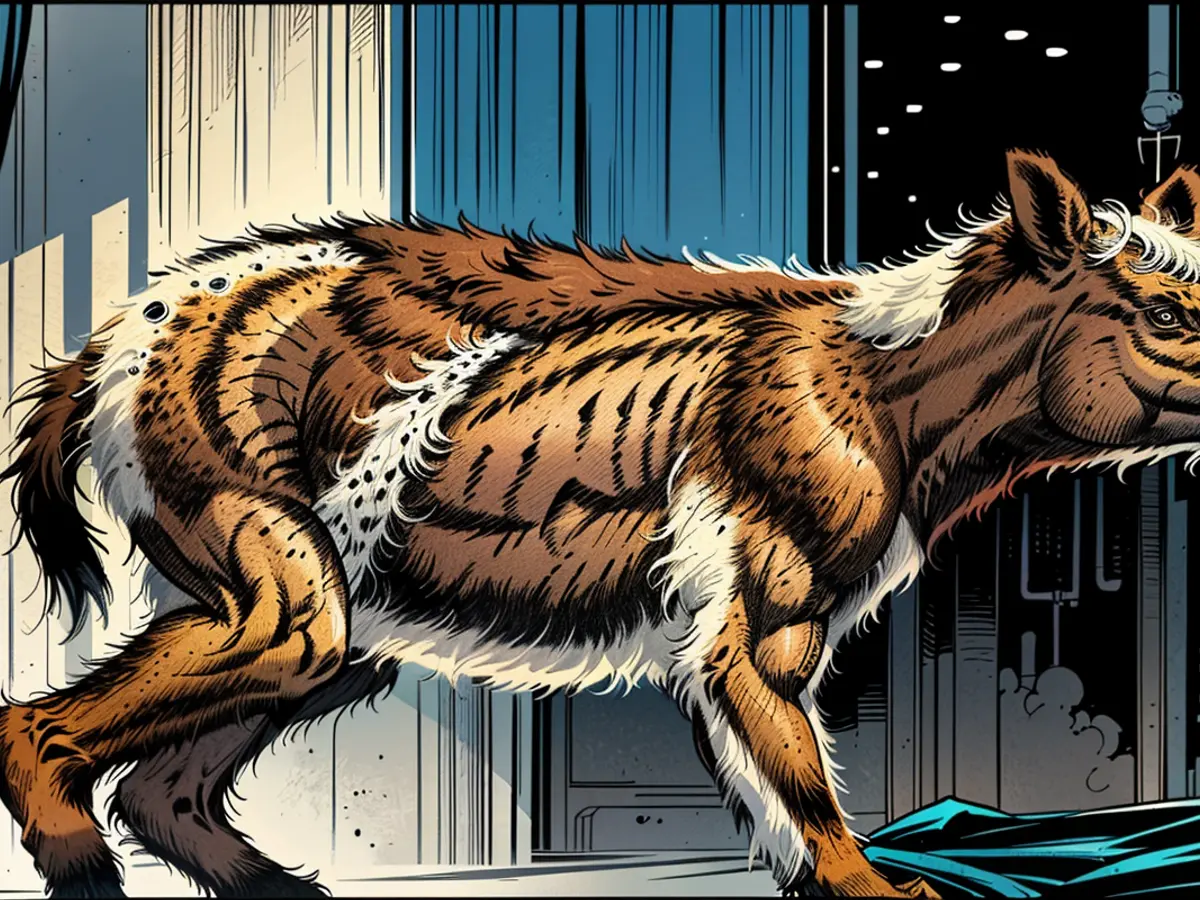- 48 million-year-old primitive horse on display
A 48-million-year-old fossil of an ancient horse is now on display at the Messel Pit. Discovered last summer, the fossil has been prepared and is part of a special exhibition, as announced by the World Heritage Site Messel Pit. The excavation team of the Hessian State Museum Darmstadt discovered the first ancient horse foal in seven years last summer in the UNESCO World Heritage Site.
The ancient horse, of the species Eurohippus messelensis, fell into the Messel Maar Lake 48 million years ago and was preserved as a fossil in the lake sediment, the oil shale. The ancient horse mare was also pregnant. The bones and teeth of the unborn foal were found in its abdominal cavity. Initially, researchers thought the teeth were in the animal's stomach.
Unique aspects of the fossil
The exhibit is unique among displayed fossils, as it is embedded on two slabs, with the skull separate from the body. This facilitates scientific examination, as it can be better analyzed by computed tomography. "The skull area of the fossil has noticeable structures that might indicate a bite injury or parasitic infestation," it was stated further. On August 13, the fossil will not be on display in the museum as it is being scanned. A 3D model of the fossil will be created afterwards.
Ancient horses are an extinct branch within the horse family. They lived approximately 50 million years ago in Central Europe and were not much larger than a dachshund. The Messel Pit in southern Hesse, with its significant fossil findings, was designated the first UNESCO World Heritage Site in Germany in 1995. The finds are a testament to a world long after the extinction of the dinosaurs and long before the evolutionary history of Neanderthals or modern humans. The largest collection of Messel fossils belongs to the state museum. The Messel Pit is a decommissioned oil shale mine and has been Germany's first UNESCO World Heritage Site since 1995.
The unique display of the 48-million-year-old fossil, showing the skull separated from the body, allows for advanced scientific examination using computed tomography. This technique might reveal possible bite injuries or parasitic infestations on the fossilized skull.
Fossilized teeth found in the abdominal cavity of the ancient horse mare initially led researchers to believe they were in the animal's stomach, but they actually belonged to the unborn fossilized foal.








